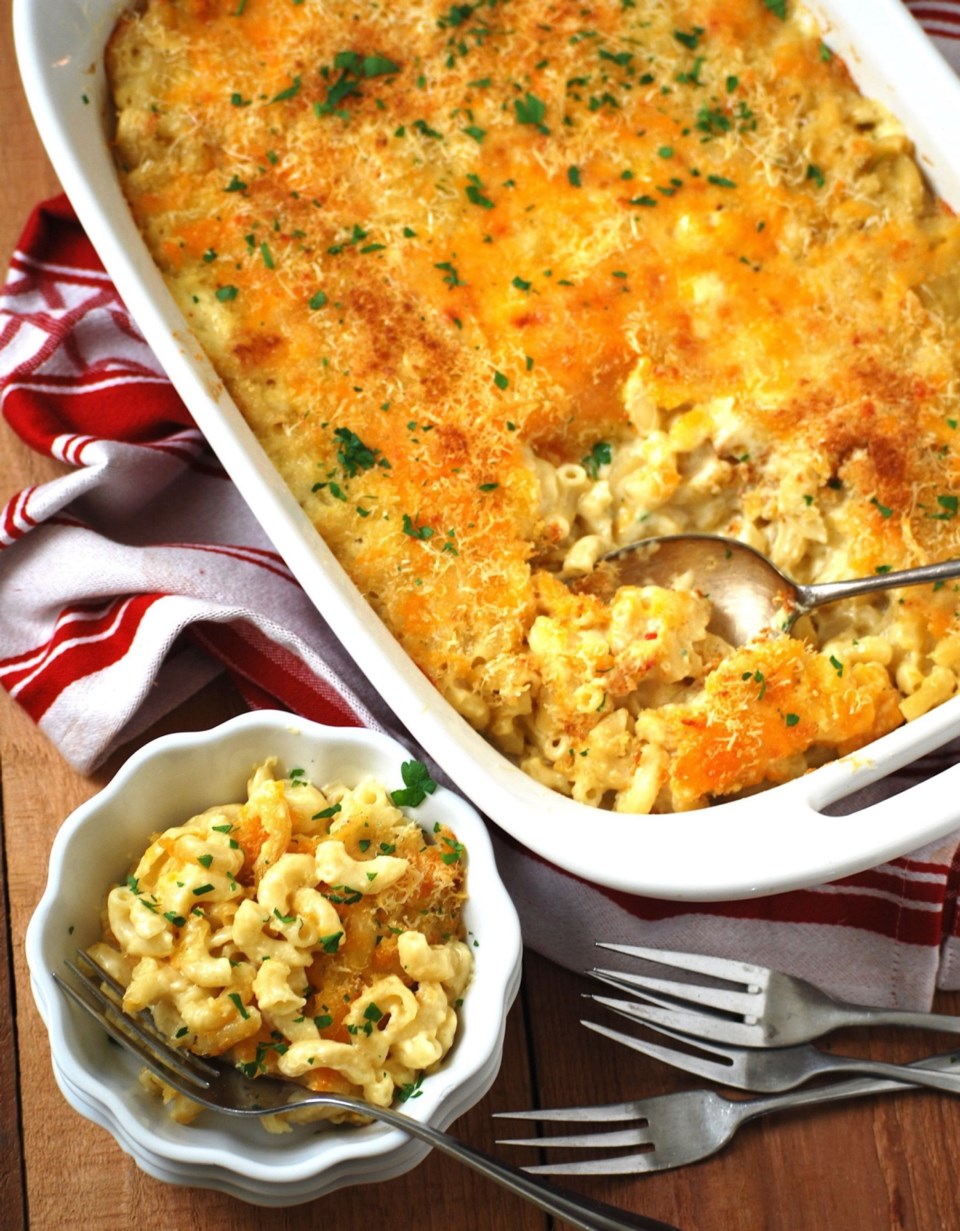It’s September and families are getting back to their normal work and school routines. On the program will be what to serve for a midweek dinner. One that always pleases is mac and cheese.
You can buy it in a box ready to cook or frozen ready to reheat, but it will always taste best when homemade. And the steps aren’t complicated — cook macaroni, make sauce, flavour and combine, put in a dish, top and bake.
If you’ve tried to make mac and cheese before and it turned out lacklustre, the guide and family-style recipe below should help change that.
Cooking the macaroni: Always cook pasta in a generous amount of lightly salted water to prevent the macaroni from sticking together and becoming starchy. The salt flavours it. For this recipe, I cooked the macaroni in three litres of boiling water flavoured with 1 tsp salt. Cook the macaroni al dente — an Italian term that means the pasta offers a slight resistance when chewed.
Making the sauce: Step one is to make a roux, a mixture of melted butter and flour cooked in a pot until the raw flour taste is gone. Warm milk is then slowly whisked in, creating a white sauce. If you mix in cold milk or add the milk too quickly, you could get lumps. The sauce is then brought to a simmer, until lightly thickened, then removed from the heat. Then, the cheese gets mixed until just melted. Always use grated cheese, as it will melt more quickly and evenly than cubes. Do not add the cheese to the sauce while it’s simmering, as it might overcook, separate and create an oily-looking surface.
Cheese, flavourings and additions: Cheese, of course, is the main flavour in the sauce, but the milk will dilute its taste. So, unless your family prefers a very mild taste, opt for an easy-to-grate cheese with a bold flavour. Old or extra-old cheddar is a popular choice and I would start with it when first attempting to make mac and cheese. Once you become proficient, you could experiment and combine that cheddar, or replace it entirely, with other types of tangy cheese, such as gouda, Jarlsberg, havarti, provolone, asiago and smoked or flavoured cheeses.
Once you’re a mac- and-cheese-making pro, depending on the style you want to make, you could also mix other tastes into the cheese sauce, such as pesto or salsa. For added sustenance and protein in your mac and cheese, you could mix in a cup or so of such things as cubed cooked chicken or ham, peas, flaked tuna or small shrimp.
Toppings: Before baking, you can simply top your mac and cheese with more of the cheese used in the sauce. You can also top it with something that will provide a golden top. In this recipe, I achieved that by using panko (coarse breadcrumbs) and Parmesan cheese.
Family-style Mac and Cheese
This large and tasty dish of mac and cheese should appeal to all ages. I like to accompany it with a simple green salad.
Preparation time: 20 minutes
Cooking time: About 40 minutes
Makes: Six to eight servings
3 cups macaroni
1/4 cup butter, plus some for greasing
1/4 cup all-purpose flour
3 1/2 cups warm 2 per cent or whole milk (see Note)
250 grams old or extra-old cheddar cheese, grated
• salt and white pepper to taste
• pinch or 2 smoked or regular paprika (optional)
1/3 cup freshly grated Parmesan cheese
1/3 cup panko
2 Tbsp chopped fresh parsley (optional)
Cook macaroni in a pot filled with a generous amount of lightly salted, boiling water until just tender, about seven to eight minutes. Meanwhile, preheat oven to 350 F. Lightly butter a 13-x-9-inch casserole or baking dish (mine was 2 3/4 -inches tall).
Melt 1/4 cup butter in a medium-to-large pot set over medium heat (my pot was eight inches wide and four inches tall). Mix in the flour and cook and stir one to two minutes, until well blended.
Whisk and dribble in 3/4 cup of milk. Cook until the mixture is quite thick. Slowly whisk in the remaining milk. Bring to a simmer, stirring frequently so it does not scorch the bottom. Cook one minute to thicken, then remove sauce from heat.
Gradually stir in three-quarters of the cheddar cheese, until it’s just melted and combined with the white sauce. Season the sauce with salt, pepper and paprika.
When the macaroni is cooked, drain it well. Stir the macaroni into the sauce, then spoon into the baking dish. Top with remaining cheddar cheese and sprinkle with the Parmesan cheese and panko.
Bake for 25 to 30 minutes, or until light golden and just bubbling. Turn the oven to broil, and broil mac and cheese one to two minutes, until golden on top. Sprinkle with parsley, if using, and serve.
Note: The milk can be warmed to just below a simmer in the microwave or in a pot on the stove set over medium-low heat.
Eric’s options: If you wanted to blend the cheddar with another type of tangy and flavoured cheese, I’ve also made this recipe using 125 grams of cheddar, grated, and 125 grams of herb- and spice-flavoured havarti cheese, grated. That type of havarti is sold at many supermarkets.
If you’re not feeding a family, you could divide the macaroni mixture and topping between two smaller casseroles, or six to eight single-serving ones. Bake what you’ll eat now, and cool, cover and freeze the other one to thaw and bake at another time.
Eric Akis is the author of eight cookbooks. His columns appear in the Life section Wednesday and Sunday.



